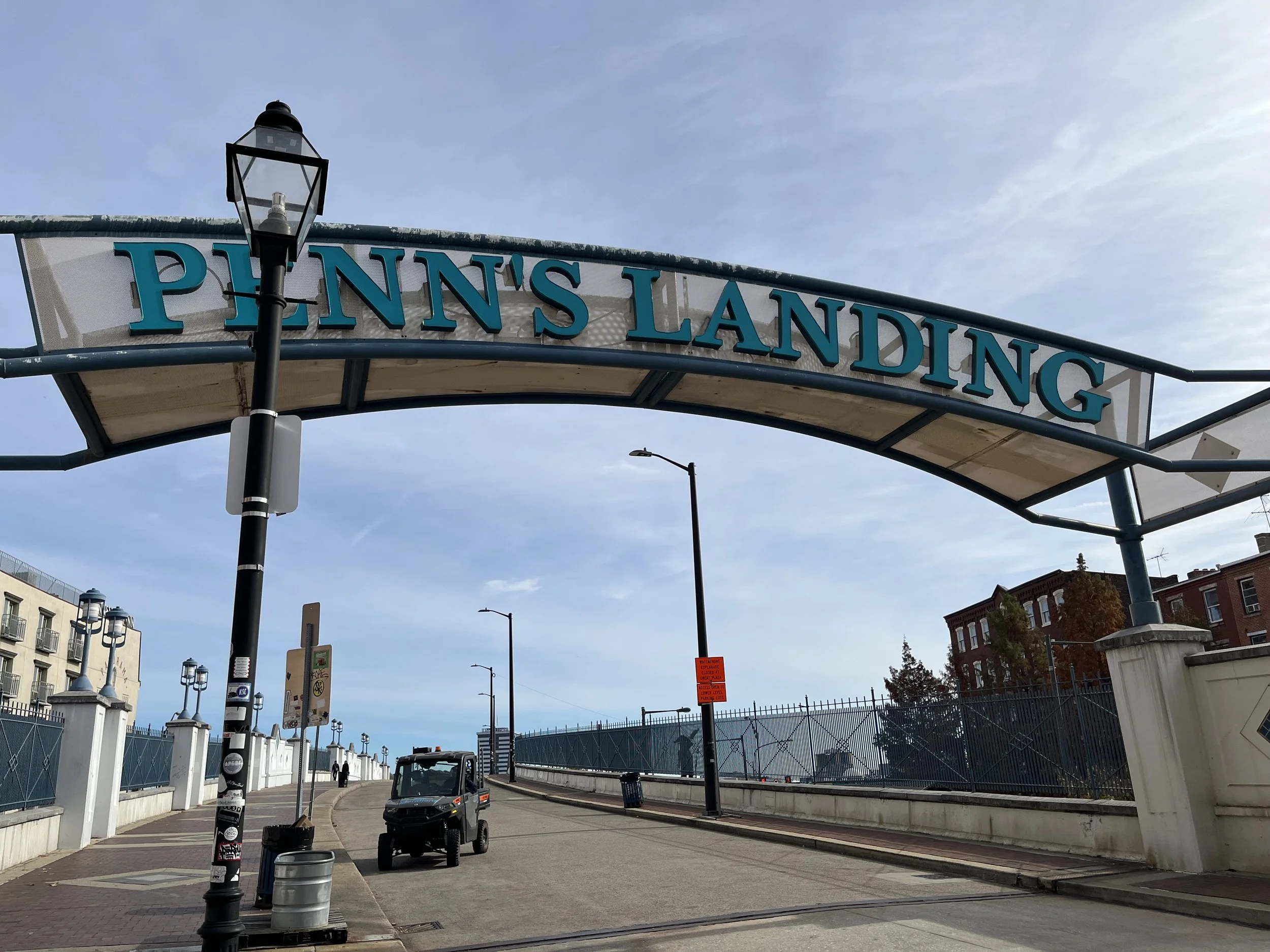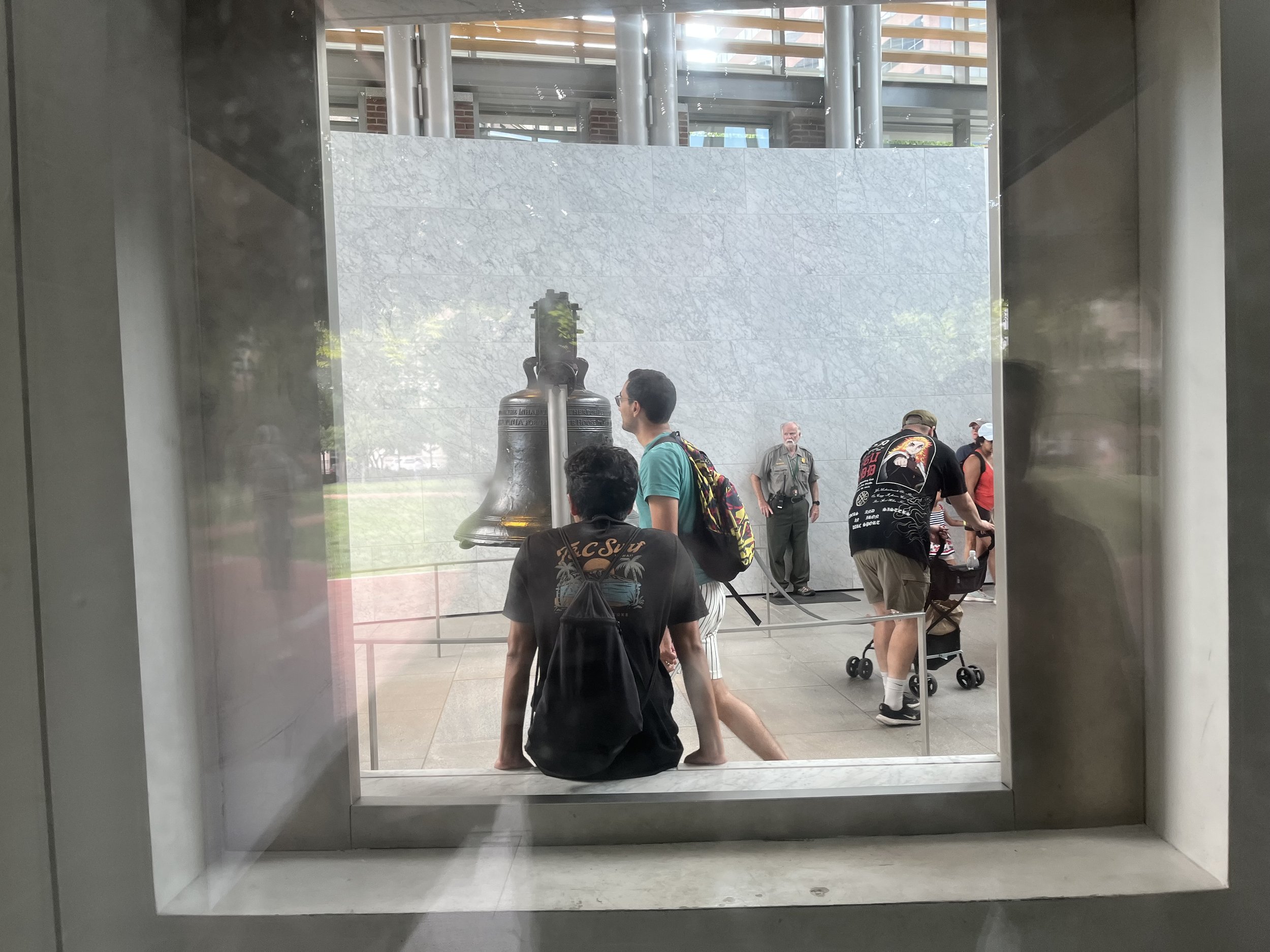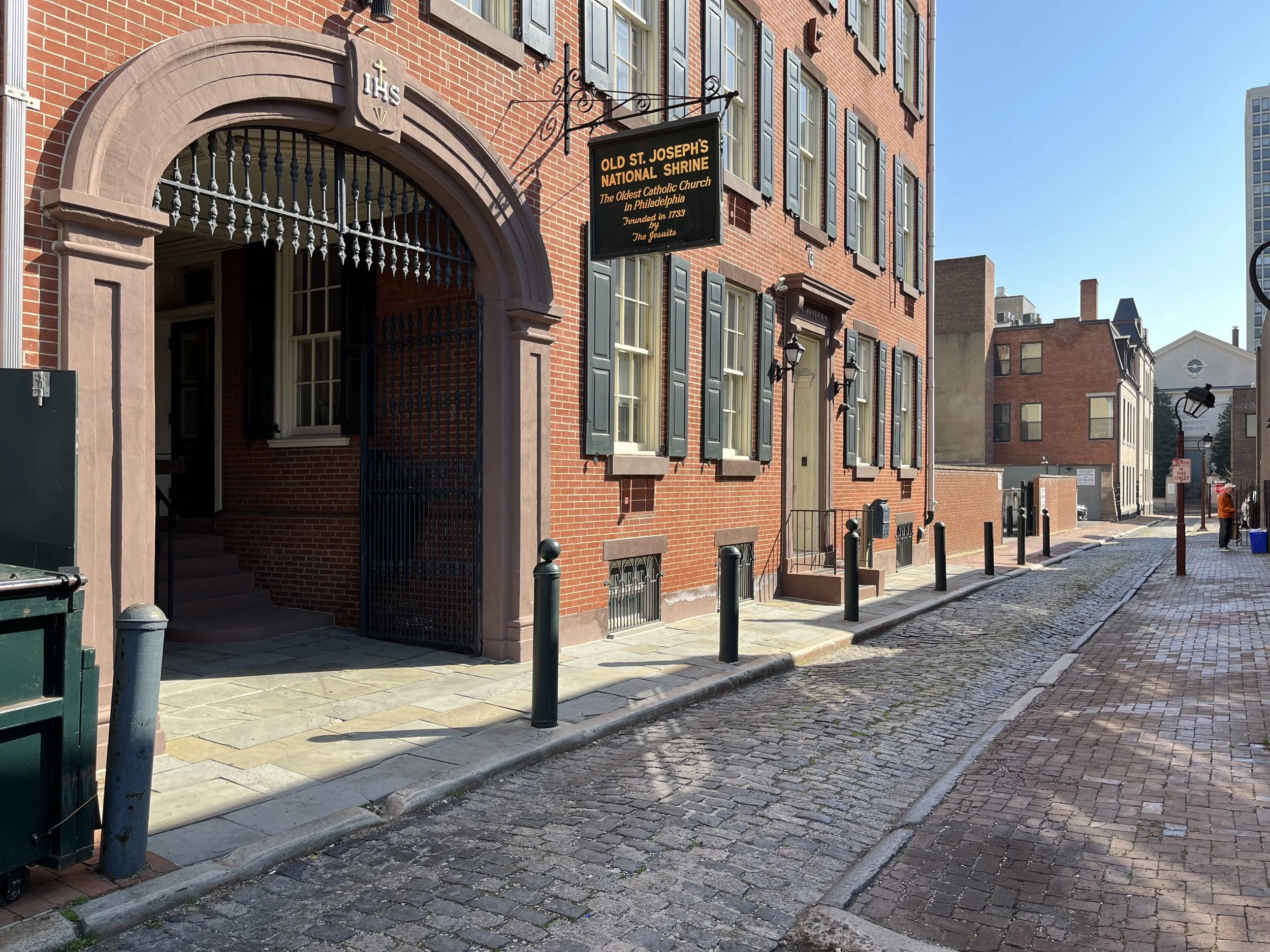My “Aha” Moment – Part 2
How I learned the real truth about Billy
Penn and his City of Brotherly Love
Philadelphia wasn’t built on typical farmland;
it was hacked out of a “howling wilderness”
One day, while waiting for a tour group from Mumbai, I looked down at Independence Hall and asked myself: “What was Philadelphia like when William Penn got here?”
The simple answer: much different from anything I learned growing up three miles from the city in Delaware County.
Before William Penn came, Philadelphia looked much like this:
The land where William Penn laid out his city may have been farmland. But it was also a forest. Photo by Nicholas A. Tonelli. Old-growth hemlocks (with scattered hardwoods), Bald Eagle State Forest, Clinton County, on Riansares Mountain. https://www.flickr.com/photos/nicholas_t/8635634669/ This file is licensed under the Creative CommonsAttribution 2.0 Generic license.
It was a “howling wildnerness” says German lawyer, writer and teacher Francis Daniel Pastorius
When Penn got to Philadelphia in 1682, the city consisted of “three or four little cottages” and the Blue Anchor Tavern. Pastorius says he got lost several times “traveling from his cave by the waterside, to the hut of a Dutch baker, named (Cornelius) Bom, who made their bread.” That’s how wild it was.
Finding his way in this city forest was difficult
Pastorius lived on Front Street just south of Lombard Street. Bom lived near Third and Chestnut Street, a distance of about seven blocks today. But locating Bom’s house again in what was described as “a great forest” by one of the oldest Swedes on record, was not easy for Pastorius and he kept getting lost.
More proof: “The woods and swamps between the Delaware and Schuylkill rivers were so deep and thick that a span of fettered horses (chained together) lost there was not found for several months,” says Peggy Robinson in Pennsylvania Heritage Magazine.
Philly purchased the name Penn’s Landing from Chester, Pa. in 1970. Photo by Jim Murphy, author of “Real Philly History, Real Fast.”
3 things most people don’t know about Philadelphia
Philadelphia bought the rights to the name Penn’s Landing from Mayor John Nacrelli of Chester in 1970. No one seems to know how much money Philly paid. But we do know Penn landed first in New Castle, Delaware, then in Upland, and then in Philadelphia. The third time was the charm.
William Penn wanted his city to be as close to the sea as possible. Why? To avoid conflict with other colonies. First, he tried placing his city at Upland, where the city of Chester is now in Delaware County. But the Dutch and Swedes, who had been there long before, weren’t willing to swap land with him or move. So Penn traveled further upriver to the current site of Philadelphia, which is well-situated between two rivers. It turned out to be a terrific spot, with nearby farmlands, woods for ship-building, and a giant clay deposit for building brick homes. Here, Penn hit the trifecta.
William Penn hoped to build a 10,000-acre city. But he couldn’t get that much land in this location. So he settled for a little over 1,200 acres on land he purchased or swapped with the Svenson or Swanson brothers of Southwark.
Did his “Holy Experiment” become “the seed of a nation”? I think so.
Penn believed his colony, and his practice of allowing freedom of worship to any religion, could make it the “seed of a nation.” When you realize that two Constitutional Conventions met in Philadelphia, and that the Declaration of Independence, Articles of Confederation and Constitution of the U.S. all were adopted here … I believe Penn accomplished his goal.
People line up every day to visit the Liberty Bell. And the only reason the bell is here is because of William Penn … and the freedoms he gave to his colony with his Charter of Privileges. Photo by Jim Murphy.
National Park Service employees wanted
William Penn removed from Welcome Park!
Some misguided National Park Service employees obviously don’t realize what Penn meant to Pennsylvania … and to the U.S. In January 2024, they suggested removing William Penn from Welcome Park (at 2nd Street and Sansom Walk). Why? I have no idea. To me, the idea was absurd.
But these employees seemed to misunderstand Philadelphia’s history. The only reason the Liberty Bell is here is because of William Penn. The Assembly of Pennsylvania ordered this bell to celebrate the 50th Anniversary of Penn’s Charter of Privileges … which laid out the rights and duties of our government and its citizens. USHistory.org calls it Pennsylvania’s original constitution.
This important bell was installed in the State House of Pennsylvania, which we now call Independence Hall. And by 1760 or so … thanks to our two superstars, William Penn and Ben Franklin … Philadelphia had become the largest, most important and some say most cultured city in America.
If you don’t want to wait in line and go through airport-like security, you can view the Liberty Bell from this window near Chestnut Street. To find it, just walk down the brick walkway on the east side of the Liberty Bell Center from Market Street almost all the way to Chestnut Street. Photo by Jim Murphy.
Would this growth have occurred if Penn hadn’t
invited all religions to practice their faith here ?
I doubt it. And in 1734, when Protestants began protesting the fact that “papists” were celebrating Mass at a house-chapel (St. Joseph’s Church) on Willings Alley, the matter went before the Provincial Council. It ruled that Penn’s Charter of Privileges, which offered unprecedented civil and religious freedom, took precedence over the Penal Laws of England.
You might even say Penn’s charter trumped English law. St. Joseph’s Church says, “No where else could Catholics enjoy public worship and growth to the extent possible in 18th century Philadelphia.” Result: Penn 1, Britain O. And another good reason for people to honor Penn, not throw away his legacy.
In 1734, St. Joseph’s Church in Philadelphia reportedly became the only place in the British Empire where Mass could be said legally. Photo by Jim Murphy.
Fascinating Facts:
Thomas Jefferson called William Penn “the greatest law-giver the world has produced.” Pretty glowing words from a gifted leader.
Pennsylvania was not named for William Penn. King Charles II, who gave Penn the 45,000 square miles, named the colony Pennsylvania or Penn’s Woods for Penn’s father, Admiral William Penn.
About 60% of Pennsylvania is still covered by forest, an amazing figure when you consider that the state is part of the Northeast Megalopolis. So it is well-named.
Penn lived in Philadelphia less than four years. Yet he had a huge influence on his city, his colony and on North America.
Penn had a wonderful relationship with the Lenape tribe. But he also had up to 12 slaves. The Quakers did not “get religion” about slavery till about 1770. Too bad. That was a major weakness in their thinking and actions.
Some Sources:
https://archive.org/stream/americancolonial008907mbp/americancolonial008907mbp_djvu.txt
https://eada.lib.umd.edu/text-entries/pastoriuss-description-of-pennsylvania/
https://en.wikipedia.org/wiki/Penn%27s_Treaty_with_the_Indians
https://oldstjoseph.org/18th-century
http://paheritage.wpengine.com/article/william-penns-colony-cave-people/
https://philadelphiaencyclopedia.org/essays/poetry-and-poets/
https://philadelphiaencyclopedia.org/essays/roman-catholic-church-and-catholics/
https://southwarkhistory.org/quick-switch-680c994b9af4




